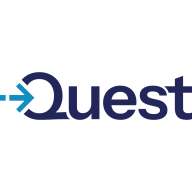

Segment and erwin Data Intelligence compete in the data management space, each offering distinct capabilities. While Segment may have advantages in pricing and support, erwin Data Intelligence is considered superior due to its comprehensive features.
Features: Segment focuses on customer data infrastructure, offering real-time personalization and integration with numerous app stacks. Its strong points include facilitating a seamless integration process, providing tools for instantaneous data personalization, and compatibility with a wide range of application stacks. erwin Data Intelligence is recognized for extensive metadata management, detailed data governance, and lineage tracking, highlighting its strengths in managing complex data environments, ensuring robust data accuracy, and facilitating enterprise-grade information governance.
Ease of Deployment and Customer Service: Segment is known for its simple deployment, which allows quick integration into existing systems. Its responsive support is valuable for setup and troubleshooting. erwin Data Intelligence may require more complex deployment due to its advanced functionalities that emphasize detailed data management requirements. Customer service for both platforms is supportive, yet Segment's deployment ease provides an advantage for businesses that require rapid implementation.
Pricing and ROI: Segment offers competitive pricing, enabling rapid ROI due to lower setup costs and efficient customer data utilization. erwin Data Intelligence, while potentially involving higher initial investments, delivers strong ROI through comprehensive data governance and management solutions that align with extensive enterprise needs. Segment is attractive for businesses with cost-sensitive setups, while erwin is favored by those prioritizing thorough data oversight and governance.
| Product | Market Share (%) |
|---|---|
| Segment | 0.2% |
| erwin Data Intelligence | 1.8% |
| Other | 98.0% |


| Company Size | Count |
|---|---|
| Small Business | 1 |
| Midsize Enterprise | 4 |
| Large Enterprise | 14 |
Erwin Data Intelligence drives automation, supports data catalog and literacy, and offers Smart Data Connectors for efficient metadata handling. Its customization flexibility and integration facilitate enhanced data governance, visualization, analysis, and compliance.
Erwin Data Intelligence offers automation scripts that accelerate development, integrated data cataloging, data profiling, and lineage analysis to streamline information management. Users appreciate its capability in metadata harvesting, code engineering, and infrastructure integration. The tool provides flexibility to enhance governance and data visualization. While it performs well, users have noted challenges with API robustness and interface complexity, and there are opportunities to improve workflow integration, AI features, and large dataset handling. Companies rely on it for metadata management, automation of metadata mappings, and data governance to support compliance and literacy.
What are the main features of Erwin Data Intelligence?In industries such as finance, healthcare, and retail, organizations implement Erwin Data Intelligence for efficient metadata management and governance. It assists in automating lineage and mapping, supporting ETL procedures while enhancing compliance and data literacy efforts. Its flexibility and integration support create valuable data insights and governance improvements.
Segment is a customer data platform that helps organizations collect, unify, and analyze customer data from various sources. Its primary use case is to provide a single view of the customer across different touchpoints, enabling businesses to deliver personalized experiences.
The most valuable functionality of Segment is its ability to integrate with numerous data sources, such as websites, mobile apps, and third-party tools. It simplifies the process of data collection and unification, allowing organizations to easily access and analyze customer data in real time.
Segment helps organizations by providing a comprehensive understanding of their customer's behavior, preferences, and interactions. This valuable insight enables businesses to make data-driven decisions, optimize marketing campaigns, and improve customer engagement. By leveraging Segment's capabilities, organizations can enhance customer experiences, increase customer satisfaction, and drive business growth.
We monitor all Data Governance reviews to prevent fraudulent reviews and keep review quality high. We do not post reviews by company employees or direct competitors. We validate each review for authenticity via cross-reference with LinkedIn, and personal follow-up with the reviewer when necessary.